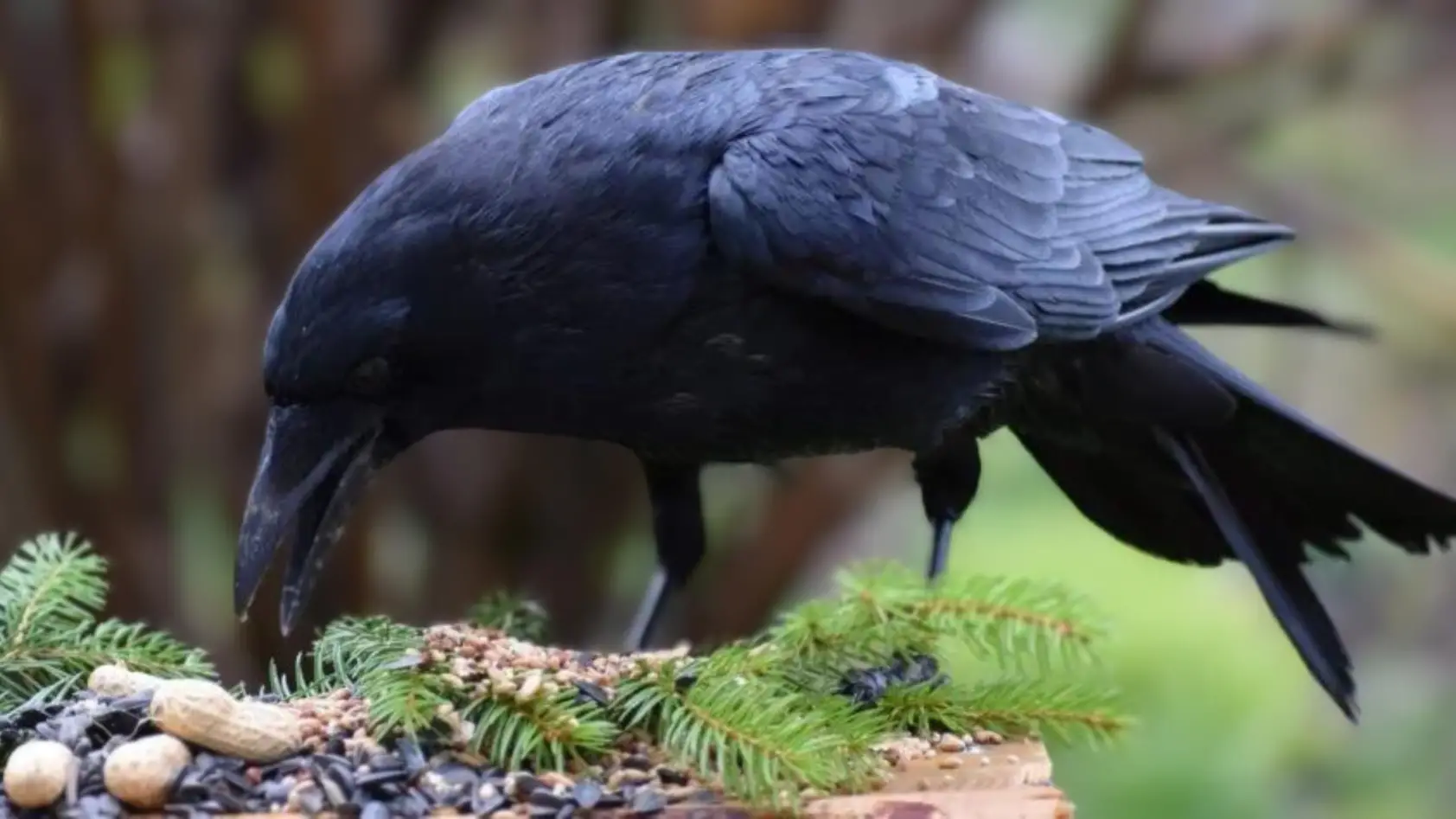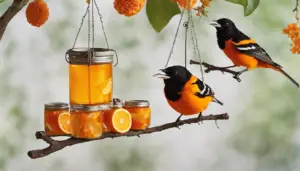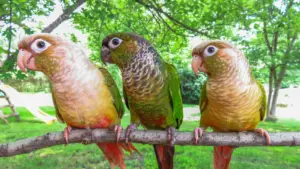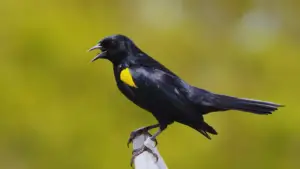How to attract ravens to your backyard is a question that many bird enthusiasts may ask themselves, and there are a few steps that can be taken to invite these intelligent and fascinating birds to your yard.
Ravens are intelligent and fascinating birds known for their striking appearance and complex behaviors. Attracting ravens to your area can provide a unique opportunity to observe these majestic creatures up close. This comprehensive guide will walk you through the steps of creating a raven-friendly environment that will entice these birds to visit and potentially even nest in your vicinity.
Understanding Ravens
Before we dive into the details of attracting ravens, it’s essential to develop an understanding of these remarkable birds. Ravens belong to the Corvidae family, which also includes crows, magpies, and jays. They are highly intelligent, adaptable, and known for their problem-solving abilities. Ravens are large birds with shiny black feathers, wedge-shaped tails, and distinctively shaped beaks. They possess a range of vocalizations and are capable of mimicking other sounds, including human speech.
Importance of Attracting Ravens
Attracting ravens to your area can have several benefits. Ravens are important members of the ecosystem, contributing to the balance of nature. They help control populations of small mammals and insects, and their scavenging habits help keep the environment clean. Observing ravens in their natural habitat also provides a unique and enriching experience for bird enthusiasts and nature lovers.
Creating a Raven-Friendly Environment
To attract ravens to your area, you need to create an environment that meets their specific needs. Here are several key factors to consider:
Providing Food
Ravens are omnivorous and have a varied diet. They consume a range of food, including insects, fruits, berries, small mammals, and carrion. By providing a reliable food source, you can entice ravens to visit your property.
Choosing the Right Feeder
When selecting a feeder for ravens, opt for large and sturdy models that can accommodate their size. Platform feeders or tray feeders work well, as they provide ample space for ravens to land and feed comfortably.
Selecting Appropriate Food
To attract ravens, offer a diverse range of food options. Consider providing meat scraps, suet, nuts, fruits, and even eggs. Ravens are opportunistic feeders, and offering a variety of food will increase the likelihood of their visits.
Placement of Feeders
Strategic placement of feeders is crucial to attracting ravens. Position them in open areas with good visibility, away from potential predators such as cats. Placing the feeders near trees or other elevated surfaces will also give ravens a vantage point to survey the surroundings.
Water Sources
Like all birds, ravens require access to fresh water for drinking and bathing. Providing a birdbath or a shallow dish of water will attract ravens and cater to their hydration needs.
Shelter and Nesting Areas
Creating suitable shelter and nesting opportunities will further encourage ravens to choose your area as their habitat. Ravens prefer tall trees for nesting, so planting and preserving mature trees in your vicinity will be attractive to them. Dead trees or snags are particularly appealing to ravens, as they offer potential nesting sites.
Using Bird Feeders for Ravens
Bird feeders can play a significant role in attracting ravens. Here’s what you need to know:
Choosing the Right Feeder
When selecting a feeder for ravens, opt for large and sturdy models that can accommodate their size. Platform feeders or tray feeders work well, as they provide ample space for ravens to land and feed comfortably.
Selecting Appropriate Food
To attract ravens, offer a diverse range of food options. Consider providing meat scraps, suet, nuts, fruits, and even eggs. Ravens are opportunistic feeders, and offering a variety of food will increase the likelihood of their visits.
Placement of Feeders
Strategic placement of feeders is crucial to attracting ravens. Position them in open areas with good visibility, away from potential predators such as cats. Placing the feeders near trees or other elevated surfaces will also give ravens a vantage point to survey the surroundings.
Planting Trees and Shrubs to Attract Ravens
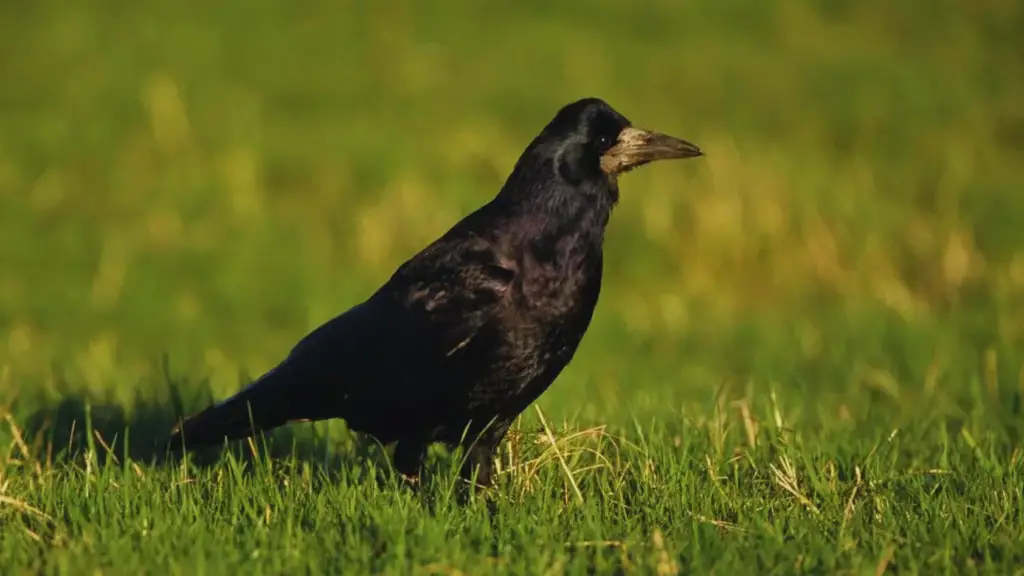
Ravens are attracted to areas with suitable vegetation. Here’s how you can use trees and shrubs to create an inviting environment:
Native Species for Ravens
Planting native tree and shrub species is essential for attracting ravens. They are adapted to the local environment and provide the natural habitat that ravens seek.
Creating a Diverse Habitat
Incorporate a variety of plant species to create a diverse habitat. Ravens are more likely to be attracted to areas with a mix of tall trees, shrubs, and low-lying vegetation. This diversity offers them ample foraging opportunities and provides shelter and nesting locations.
Providing Nesting Opportunities
Creating suitable nesting opportunities is crucial to attracting ravens. Here are a few steps you can take:
- Preserve existing mature trees that can serve as potential nesting sites.
- Install nest boxes designed specifically for ravens. These boxes should be placed at elevated locations and provide enough space for a raven pair and their young.
- Consider creating artificial nesting platforms or structures that mimic the natural nesting sites of ravens.
By providing suitable nesting opportunities, you increase the likelihood of ravens choosing your area as their breeding grounds.
Creating Visual Stimuli
Ravens are highly intelligent and curious birds. Incorporating visual stimuli in your environment can grab their attention and attract them to your property. Here are a few ideas:
- Install shiny objects such as wind chimes or reflective materials. The glimmering reflections will pique the curiosity of ravens.
- Place strategically positioned mirrors to create an illusion of a larger raven presence.
- Create a raven-friendly sculpture or artwork that mimics their appearance. Ravens are known to respond positively to visual cues that resemble themselves.
Avoiding Harmful Practices
When attracting ravens, it’s crucial to avoid harmful practices that can negatively impact their well-being. Here are a few practices to avoid:
Avoiding Pesticides
Ravens can be exposed to harmful pesticides through their prey or by direct contact. Avoid using pesticides in your garden or around your property to protect both ravens and their food sources.
Minimizing Noise and Disturbance
Ravens are sensitive to noise and disturbance. Minimize loud noises, construction activities, and other disruptive activities in the vicinity of their habitat. This will help create a calm and inviting environment for ravens to thrive.
Dealing with Common Challenges
While attracting ravens, you may encounter common challenges. Here’s how to address them:
Dealing with Aggressive Behavior
Ravens can display aggressive behavior, especially during the breeding season. If you encounter aggressive ravens, maintain a safe distance and avoid direct confrontation. It’s best to give them space and let them calm down.
Preventing Nest Predation
Predators such as raccoons, squirrels, and snakes may target raven nests. To prevent nest predation, install predator guards on nest boxes and prune nearby branches that may provide easy access to potential predators.
How to Attract Ravens FAQs
Can Ravens Be Attracted to Urban Areas?
Yes, ravens can be attracted to urban areas if the environment provides suitable food sources, nesting opportunities, and minimal disturbance. Creating a raven-friendly environment in urban settings can increase the chances of attracting them.
How Long Does It Take to Attract Ravens?
The time it takes to attract ravens can vary. It depends on the availability of resources, the proximity of suitable habitats, and the existing raven population in the area. With the right conditions, it may take several weeks to several months for ravens to discover and establish themselves in a new location.
Are Ravens Harmful to Other Birds?
Ravens are opportunistic feeders and may prey on eggs and nestlings of other bird species. However, they also play an important ecological role by controlling
populations of pests and scavenging carrion. The impact of ravens on other bird species varies depending on the specific circumstances.
Can Ravens Be Trained?
Ravens are highly intelligent and can be trained to some extent. They have been studied for their problem-solving abilities and have demonstrated the capacity to learn and respond to training techniques. However, training ravens requires expertise, time, and a deep understanding of their behavior.
How Can I Distinguish Between Ravens and Crows?
Ravens and crows can appear similar, but there are key distinguishing features. Ravens are larger, with a wingspan of up to 4 feet, while crows have a wingspan of around 3 feet. Ravens also have a wedge-shaped tails, shaggy throat feathers, and a heavier beaks compared to crows.
Do Ravens Form Long-Term Relationships?
Yes, ravens are known to form long-term pair bonds. Once a pair is formed, they will typically mate for life. Ravens engage in cooperative behaviors and exhibit complex social structures within their communities.
Do Ravens Migrate?
Ravens are generally non-migratory birds, meaning they do not migrate long distances seasonally. However, they may undertake local movements in search of food or suitable nesting sites.
What Are the Natural Predators of Ravens?
Adult ravens have few natural predators due to their large size and intelligence. However, nestlings and eggs may be vulnerable to predators such as owls, hawks, eagles, and raccoons. Ravens employ various defensive strategies to protect their nests and young.
Are Ravens Protected by Law?
Ravens are protected by various laws and regulations in different countries. In the United States, for example, ravens are protected under the Migratory Bird Treaty Act, which prohibits the possession, hunting, or harassment of these birds without appropriate permits.
Can Ravens Recognize Individual Humans?
Ravens have the ability to recognize individual humans and remember specific interactions. They can learn to associate humans with positive or negative experiences, which may influence their behavior toward certain individuals.
Are Ravens Intelligent?
Ravens are considered one of the most intelligent bird species. They possess problem-solving abilities, demonstrate complex social behaviors, and have been observed using tools in the wild. Ravens can learn from experience, adapt to new situations, and display innovative problem-solving skills.
Can Ravens Mimic Human Speech?
While ravens have the ability to mimic sounds, including human speech, they are not as proficient as some other species like parrots. Ravens may imitate certain sounds or words, but their repertoire of vocalizations is primarily focused on their own species-specific calls and vocalizations.
How Do Ravens Communicate?
Ravens communicate using a combination of vocalizations, body language, and visual displays. They have a wide range of calls, each with distinct meanings. Ravens also use physical gestures and movements to convey messages to other ravens within their social group.
What Is the Lifespan of a Raven?
Ravens have a relatively long lifespan compared to many bird species. In the wild, they can live up to 15-20 years on average, although some individuals have been known to live even longer. In captivity, where they are protected from predators and have access to regular food, ravens can live up to 40 years or more.
Are Ravens Social Birds?
Yes, ravens are social birds and often form complex social structures within their communities. They engage in cooperative behaviors, such as group hunting and mobbing of potential threats. Ravens also communicate and interact with each other in various ways, exhibiting social bonds and hierarchies.
What Do Ravens Eat?
Ravens are opportunistic feeders with a diverse diet. They consume a wide range
of food items, including insects, small mammals, birds, eggs, carrion, fruits, nuts, seeds, and even human food scraps. Their adaptability allows them to survive in different environments and exploit various food sources.
Can Ravens Solve Puzzles?
Ravens have demonstrated remarkable problem-solving abilities and can solve complex puzzles. They have been observed using tools in the wild to obtain food, displaying advanced cognitive skills. Ravens can also exhibit innovative problem-solving strategies and learn from observing other ravens or animals.
Are Ravens Superstitious Birds?
Ravens have been associated with various myths, legends, and superstitions throughout history. Their intelligence, dark appearance, and eerie calls have contributed to their portrayal in folklore and literature. However, ravens themselves do not possess superstitious beliefs.
Do Ravens Play?
Ravens engage in play behavior, especially during their juvenile stage. Play serves an important role in their cognitive and physical development. They may engage in aerial acrobatics, chasing each other, and playing with objects, displaying their intelligence and agility.
Can I Keep a Raven as a Pet?
In many countries, keeping a raven as a pet is highly regulated or prohibited due to their protected status and complex care requirements. Ravens are wild animals with specialized needs and social structures that are challenging to replicate in a domestic setting. It is generally not recommended to keep a raven as a pet unless you have the necessary expertise, permits, and facilities to provide for its well-being.
Conclusion
Attracting ravens to your area can be a rewarding experience. By creating a raven-friendly environment with suitable food sources, water, nesting opportunities, and visual stimuli, you can increase the likelihood of attracting these intelligent and fascinating birds. Remember to respect their natural behaviors, avoid harmful practices, and appreciate them as important members of the ecosystem.

